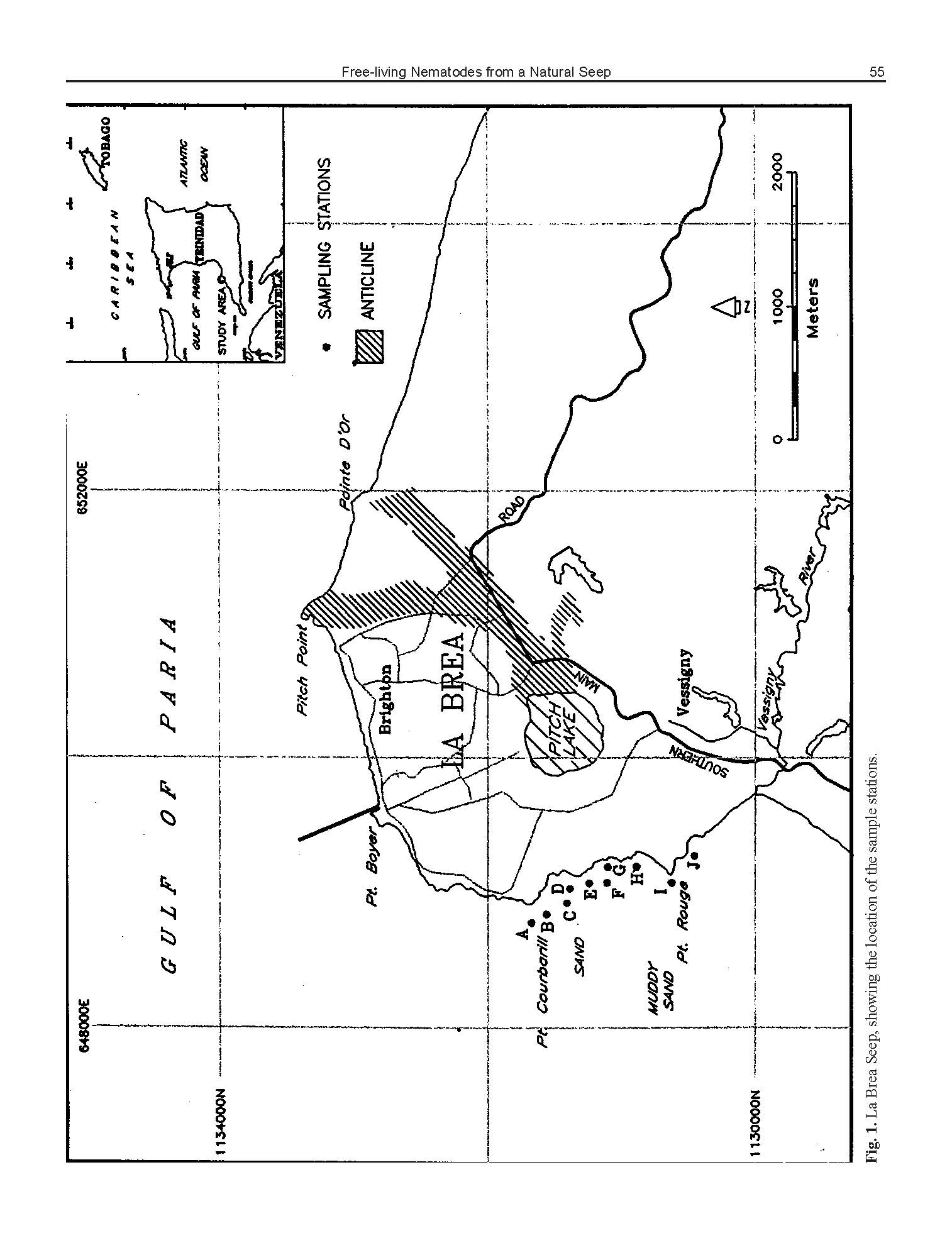Free-living Nematodes from a Natural Oil Seep at La Brea, Trinidad and Tobago.
Keywords:
free-living marine nematodes, natural oil seep, Trinidad and TobagoAbstract
The La Brea oil seep in Trinidad is reportedly one of the largest natural oil seeps in the world. As part of a larger environmental survey of this seepage site, the free-living marine nematodes of the meiofauna were studied. Samples were collected using 60 mm corers at 10 stations at the seep site, between Point Courbarill and Point Rouge west of the Trinidad Pitch Lake. The nematode fauna was represented by 16 families and 32 species. five families: Chromadoridae, Comesomatidae, Linhomoeidae, Monohysteridae and Ethmolaimidae, comprised approximately 75% of the total abundance. The species diversity (H’) was 3.09 with a range of 1.39 to 2.83 between stations. Given the uniqueness of this ecosystem, the average taxonomic distinctness index of biodiversity was applied to the nematode data and comparisons were made with other locations in the UK and Chile. Taxonomic distinctness values for La Brea was determined to be 73.28, with the lowest value at station 6 (64.81). Although nematodes are relatively abundant in the sediment samples from La Brea, their extremely low taxonomic distinctness is indicative of a stressed environment.

